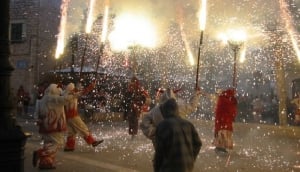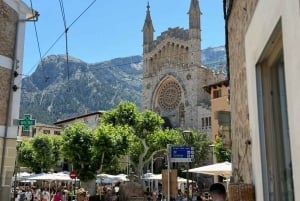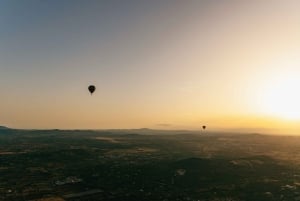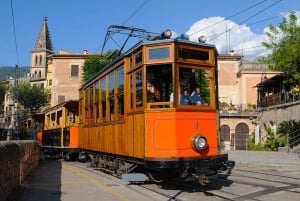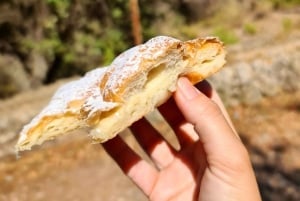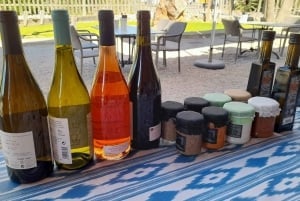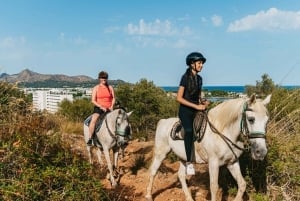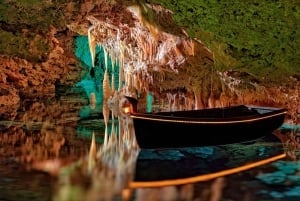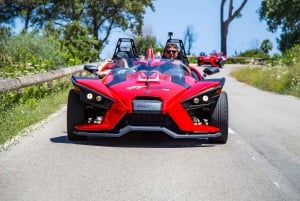Revived Rhythms and Vibes
...the result is a frenetic flurry of movement, articulated by castanets in the dancer’s hands...
Book Top Experiences and Tours in Mallorca:
If youʻre booking your trip to Mallorca last minute, we have you covered. Below are some of the top tours and experiences!- Tramuntana Small Group Tour - Soller, Deiá, Valldemossa
- Mallorca: Dinosaurland and Caves of Hams Combined Ticket
- Mallorca: Sunrise or Sunset Hot Air Balloon Flight
- Palma: Tramuntana Full-Day Tour with Sóller Train and Lunch
- Mallorca: Day Trip to Hidden Gems of Tramuntana with Lunch
The traditional music and dance of is currently experiencing something of a revival. During the dictatorial regime of Francisco Franco, the folk heritage of Spain was suppressed in favour of regulated output, halting the passage of cultural inheritance and neglecting the continual process of artistic evolution. But Franco passed away in 1975, taking with him his tyrannous fist.
Today, local traditions are thriving. Fiestas provide a platform on which music and dance can be cultivated and practiced, painting a rich backdrop for Mallorcan habitants and tourists alike. It is here that one can hear the island’s traditional sounds; the flabiol (five-holed flute), xeremies (bagpipes) and tamborí (small drum), as well as the bandúrria (similar to a lute), guitarrós (small guitar), violins, castanets, triangles and the ximbomba, a delightfully-named friction drum that is particularly popular with tourists.
A combination of any or all of these are used to provide the melodic and harmonic landscape against which the island’s many forms of dance are performed.

Copeo is a traditional, fast-paced dance involving several couples, for which the steps are dictated by the woman, whom the man has to imitate as closely as possible. Inevitably the result is a frenetic flurry of movement, articulated by castanets in the dancer’s hands, and spurred on by the accompaniment of an acoustic guitar. The same instruments provide the musical backdrop for the Bolero, a Spanish dance that evolved in the 18th century, which is underpinned by a prolonged, incessant triplet ostinato that has gained notoriety amongst percussionists with short attention spans around the globe. Thankfully for Mallorcan feet, however, the Bolero is considerably slower than Copeo.
Another traditional dance in Mallorca is Mateixa, performed by just one pair of dancers at any given moment, one of whom is replaced by a fresh dancer at the end of each repetition of the dance. The word ‘mateixa’ translates as ‘same’, and is so used because the same music is performed for each pairing of dancers, who, consequently, perform the same moves as the preceding couple. If you prefer something a little more spontaneous, however, look no further than Correfoc, an intimidating Catalan display involving devils, dragons, fireworks and drums. Our local expert claims ‘it’s very noisy and slightly dangerous!’


Finally, and not to be confused with the Dance of the Cossacks, the Dance of the Cossiers is one of the oldest and most unusual traditions in Mallorca, confined to only five or six small towns and villages. It has a heritage stretching back 600 years, and although it is performed by men, it is predominantly female in character. Notably, one of the dancers plays the role of a woman, while another acts as the Devil, trying to spoil the occasion but invariably failing. An example of the dance can be seen in the small Mallorcan municipality of Alaró, where groups begin a tour in the church square before setting off around the village, consuming masses of food and drink along the way, while trying vainly to maintain their rhythmic integrity.











